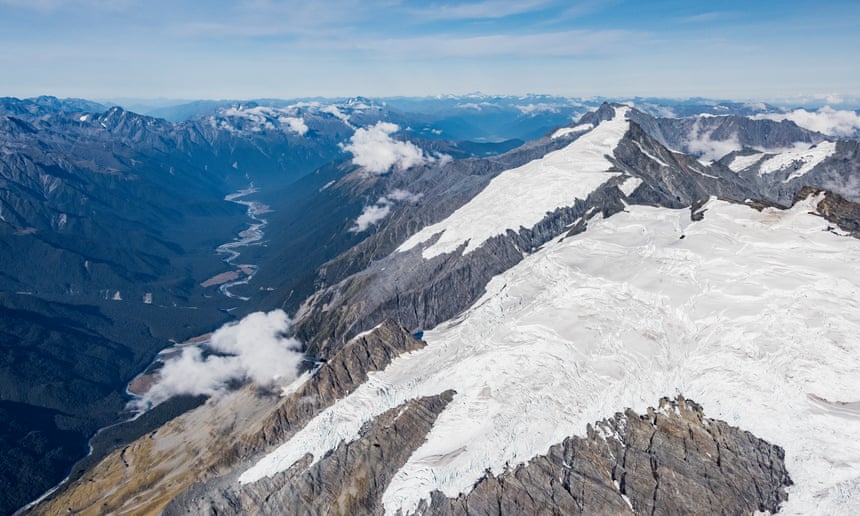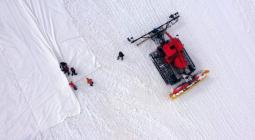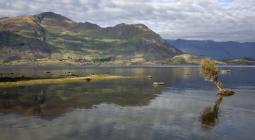'There’s still a choice': New Zealand's melting glaciers show the human fingerprints of climate change.

New research has found extreme melting of the country’s glaciers in 2018 was at least ten times more likely due to human-caused global heating
Twice a year, glaciologist Lauren Vargo and her colleagues set up camp beside two small lakes close to New Zealand’s Brewster glacier. Each time the trek to carry the measuring stakes takes a little bit longer as the glacier’s terminus gets further away.
Dr Vargo, a native of Ohio now working at the Antarctic Research Centre at the Victoria University of Wellington, is studying New Zealand’s glaciers from the air and on the ice.
New research just published in the journal Nature Climate Change has found that extreme melting of the country’s glaciers in 2018 was at least ten times more likely to have happened because of human-caused global heating.
Loss of ice across New Zealand’s glaciers in 2011, which was another extreme melt year, was six times more likely because of the planet’s warming, the study found, caused by an accumulation of greenhouse gases in the atmosphere mostly from burning fossil fuels.
Vargo, the lead author of the study, told the Guardian: “As scientists we know that theoretically warm temperatures should melt ice, but the goal of the research was to formally show that link between melting and climate change.”

The study looked at changes to 10 of New Zealand’s glaciers and was sparked by what Vargo and colleagues witnessed on monitoring flights in 2018.
“In previous years there was always snow on the glaciers but, in 2018, about half of them had no snow on them at all,” Vargo said.
The annual monitoring flights over 50 glaciers have been taking place in New Zealand since 1977 and record the position of the snowline and the thickness and flow of the ice.

There was less snow on the glaciers in 2018 than had ever been seen on the flights before.
Brewster is one of New Zealand’s smaller glaciers, but between 2016 and 2019 the glacier on New Zealand’s south island had lost 13m cubic metres of ice.
Vargo’s calculations suggest that in 2018 alone, the glacier lost 8m cubic meters of ice. That year was New Zealand’s second hottest on record, behind 2016.
The melting seen on the Rolleston glacier in 2011 may have happened once every 100 years under climate conditions that had not been altered by humans, the study found, but human influence now meant an extreme melt year like 2011 would come around once every eight years.
Vargo said the country’s glaciers were important for tourism and water resources and she hoped the study “will encourage and convince people around the world, but especially Kiwis, that we need to take stronger actions to stop climate change.”
Dr Andrew Lorrey, who coordinates the annual snowline survey for New Zealand’s National Institute of Water and Atmospheric Research, said: “The impacts from recent extreme years we’ve seen is concerning – the results from this study indicate human activities contribute to those years and load the dice against our glaciers.”
Co-author on the study, Prof Andrew Mackintosh, Head of the Monash University School of Earth, Atmosphere and Environment, says while it may be obvious that a warming planet is melting glaciers, the new research is only the second study to look closely at the human fingerprints of climate changeon disappearing glaciers.
Before 1990, Mackintosh said there was not enough evidence available for scientists to differentiate between natural changes in the climate and the human-caused changes that are causing glaciers to melt.

Prof Andrew Mackintosh: ‘If we cut greenhouse gas emissions we still might save some of the higher [altitude] glaciers.’ Photograph: Dave Allen
The study into New Zealand’s glaciers and the extreme melt events of 2011 and 2018 were “something we couldn’t imagine as glaciologists just a few decades ago”.
He said: “When I started as a glaciologist I thought things happened slowly but this was like taking a laser gun and just taking out all the snow and ice.
“These sorts of extreme melting of glaciers is bad news for their future because it changes how they respond.
“Tying that to human-induced climate change and knowing what we know about current temperatures … it points to a bleak future for glaciers.”
He said when computer models look at how quickly glaciers disappear, they’re not able to capture the ongoing impacts from extreme events.
For example, Mackintosh says that in extreme years where little snow falls and ice melts quickly, this exposes darker rock that absorbs more heat, making it more difficult for a glacier to regain what was lost in subsequent years.
“Because of what’s happening already with global temperatures and New Zealand’s temperatures, there’s some change that we’re committed to, but if we cut greenhouse gas emissions we still might save some of the higher [altitude] glaciers.
“There’s still a choice.”
3 August 2020
The Guardian




